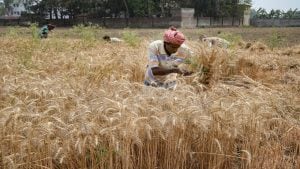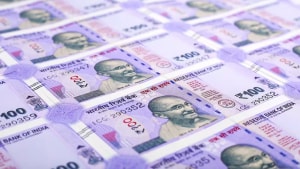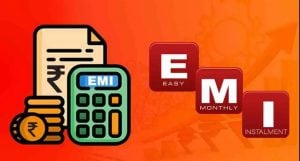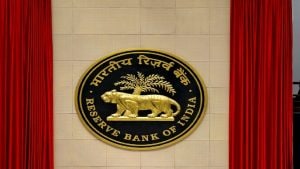RBI’s August policy: Sweet, Karam, Coffee
Summary
In RBIs latest policy it’s easy to detect the sweets or the dovish elements – it was a no-surprises policy with repo rate and stance unchanged. But lower in the menu were at least 2 Karam or spicy items
The popular Prime Video Tamil serial “Sweet, Karam, Coffee” seems the best way to describe Thursday’s monetary policy. For non Tamils, this title means life has somethings sweet, some karam (spicy foods) and some pleasant stimulants all of which are part of a typical Tamil breakfast or teatime tiffin.
Coming to the policy, it is easy to detect the sweets – the dovish elements: it was a no-surprises policy with the repo rate and the policy stance left unchanged as every poll and preview panel predicted. Even more the RBI upped the CPI forecasts for Q2 and Q3 this year, but kept the Q4 forecast unchanged at 5.2 percent, indicating they expect the vegetables-led food inflation to subside entirely by January’24. Indeed the yield of the benchmark 10-year government bond fell by one basis point after governor finished reading the policy statement, indicating the market found the policy more dovish or rather sweeter than expected.
However, as the RBI started serving more in the statement, one could detect at least two karam or spicy items. The two unexpected signs of hawkishness were:
1. The huge hike in cash reserve ratio for a portion of bank deposits, secured between May 19 and July 28 and
2. A surprisingly high 5.2 percent CPI forecast for April-June 2024
The CRR hike was more like biting into a chilly in a delicious paruppu (dal) wada. RBI’s rational is that liquidity with banks increased sharply due to the recall of Rs 2,000 notes. From May 19 (when the announcement of withdrawal of Rs 2000 notes was made) to July 28, deposits in the banking system had risen by around Rs 11 lakh crore; in the corresponding period last year, deposits had risen by only 2.5 lakh crore. This extra liquidity, RBI reasons ,can push down rates and be generally inflationary, especially given the supply side issues that have pushed up food inflation. It is this loose money that RBI is seeking to impound temporarily, by charging a 10 percent CRR on the incremental deposits since May 19.
It may noted that not all the increase in deposits came from the depositing of Rs 2000 notes. RBI data shows Rs 3.14 lakh crore of Rs 2,000 notes were returned, of which 88 percent or 2.76 lakh crore were deposited. A bulk of the rise in deposits was actually due to HDFC merging into HDFC Bank effective July1. Thus it appears RBI is withdrawing much more than to merely nullify the impact of the return of Rs 2000 notes. That’s why it is important to see this as a hawkish step.
The other karam or hawkish note is struck by the FY25 Q1 CPI forecast at 5.2 percent. The RBI Monetary Policy report of April 2023 had forecast average CPI in FY25 at 4.5 percent and CPI in Q4FY25 ending at 4.4 percent. The fan chart indicated RBI was expecting the Q1 FY25 CPI at around 4.5/4.6 percent. Why has RBI then upped the forecast, to 5.2 percent?
Part of the reason can be the lower base – inflation fell to 4.6 percent in April-June 2023. But even discounting for this, RBI seems to be pencilling in a higher than normal momentum to get a 5.2 percent CPI for April-June 2024.
One reason could be that the RBI expects a jump in revenue expenditure by the Central government ahead of the general elections in April 2024. They probably reckon there could be populist programs of income transfers to the bottom of the pyramid which can be inflationary. It is also possible the RBI is forecasting a higher than expected inflation for April-June 2024 merely to dissuade the market from running away with rate cut expectations in April 2024. This is certainly an important karam (hawkish) dish in the policy.
The CRR hike actually raises more hawkish doubts in the minds of some. Will it be withdrawn on September 8, which is the date on which the RBI says it will review the ICRR or the incremental CRR. There is good reason to expect that since advance tax payment in mid-September and GST payments on Sept 20 will withdraw some of the liquidity from the banking system.
The festival season also starts with Ganesh Chaturti on September 19 and deposits are withdrawn in a big way during the festive season. Hence Sept 8 seems an opportune time to end the 10 percent CRR tax. But, if by then, RBI smells more inflationary pressures it may well keep the ICRR tool and only reduce the rate to may be 5 percent. All told, this is a lingering hawkish doubt: when will RBI abolish the ICRR? Not surprising bank stocks were downbeat after the policy on Thursday.
Repo rate and CRR hikes (the main tiffin) apart, the RBI had a dose of lovely south Indian filter coffee, by way of regulatory and development policies:
1. First is a welcome support for the home loan borrower: the RBI has warned banks from elongating the home loan repayment tenor too far out, when rates rise. Increasing the number of EMIs to be paid, means the customer ends up paying more. Also this practice can lead to camouflaging potentially stressed loans. Banks, in their zest to keep EMIs low and stable, may push repayment period beyond the working life of the home buyer.
2. Secondly, RBI has gone on to embellish the UPI or the Unified Payments Interface. The central Bank will soon launch “conversational payments” on UPI, which will be an AI product that can handhold customers in remote areas to learn net banking.
3. Third, the RBI has also announced that it is building a public-tech platform, that will digitalise a product like Kisan Credit Cards from start to finish. If successful, such a platform may enable banksto lend to lower and lower echlons. Now that’s a lot of stimulation for many bottom-of-the-pyramid households.
All told the policy seems a wholesome meal of sweet, karam, coffee.

Elon Musk forms several ‘X Holdings’ companies to fund potential Twitter buyout
3 Mins Read
Thursday’s filing dispelled some doubts, though Musk still has work to do. He and his advisers will spend the coming days vetting potential investors for the equity portion of his offer, according to people familiar with the matter


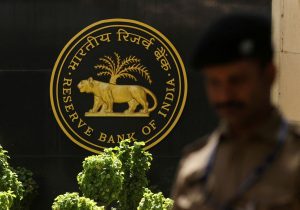






 Listen to the Article
Listen to the Article  Daily Newsletter
Daily Newsletter






